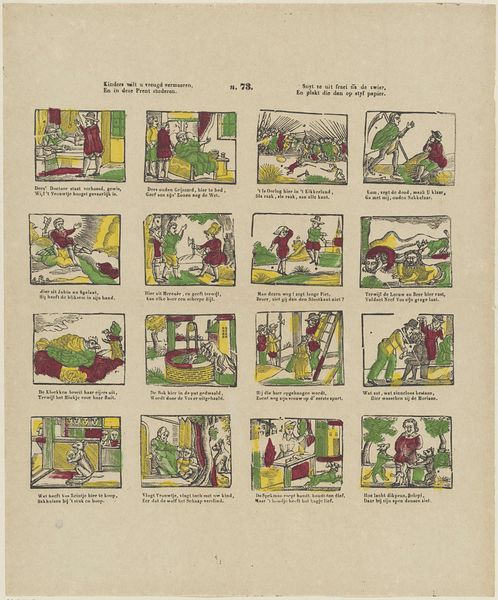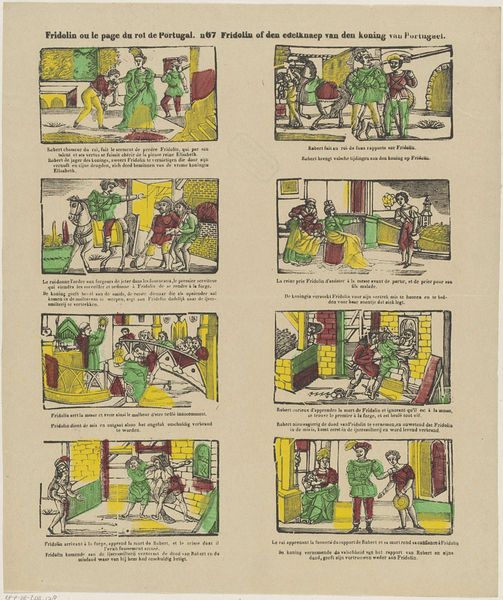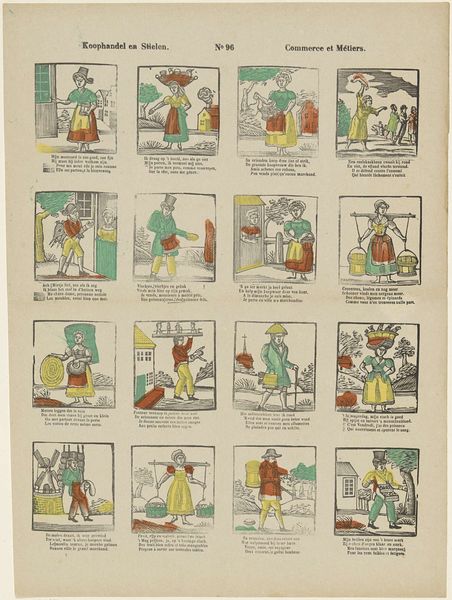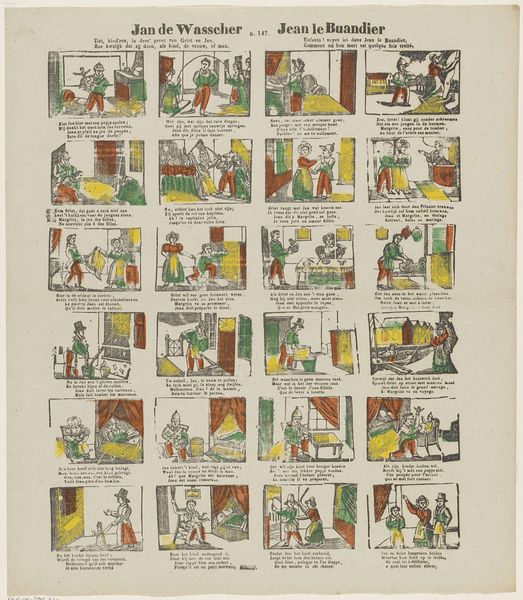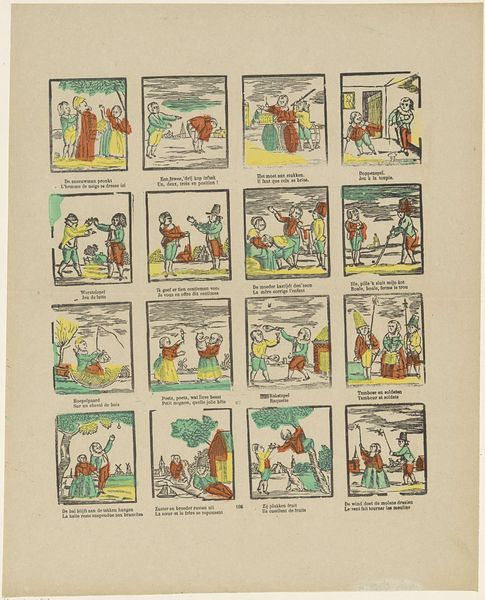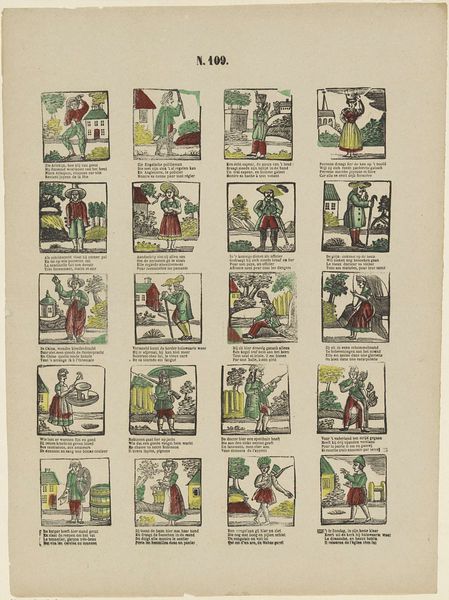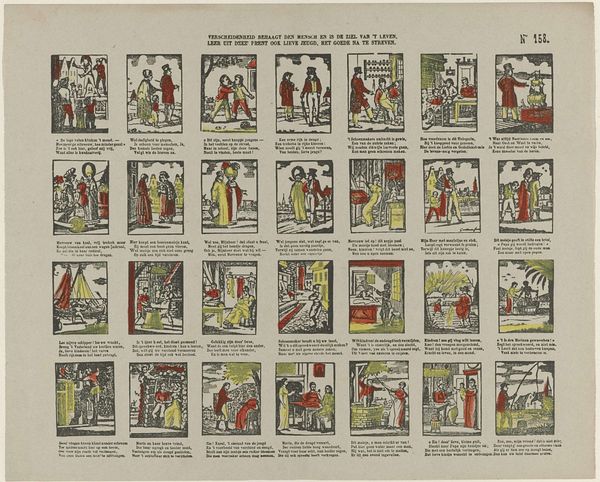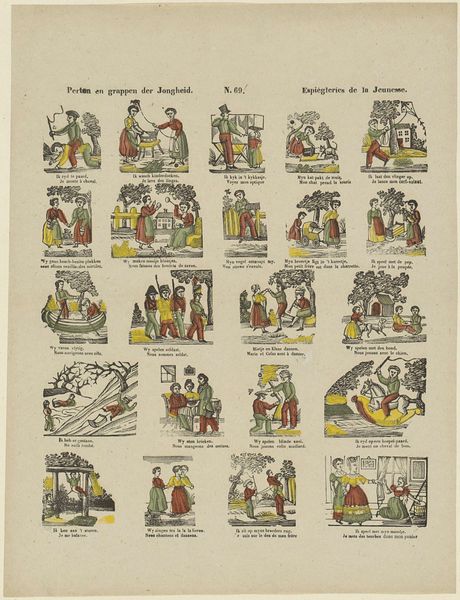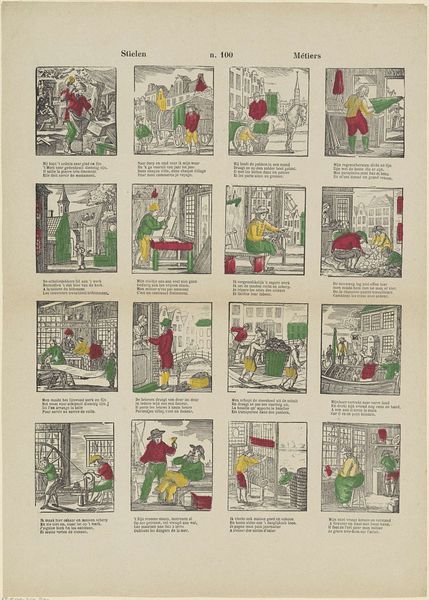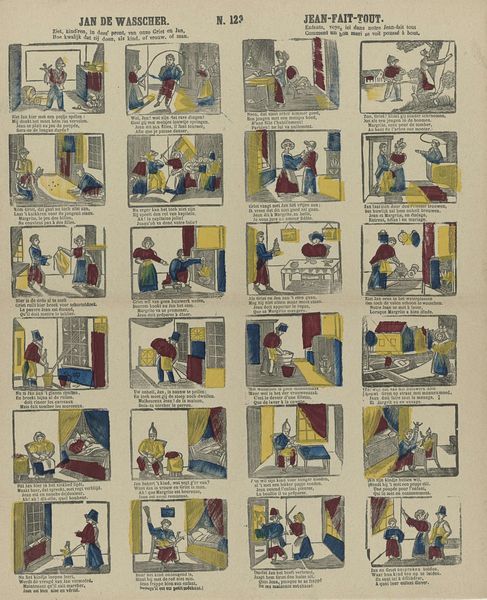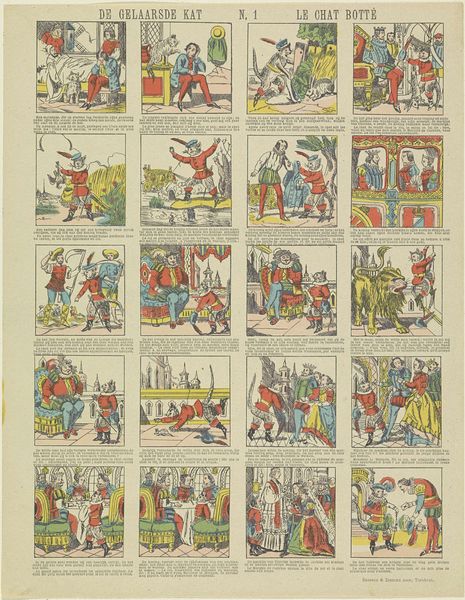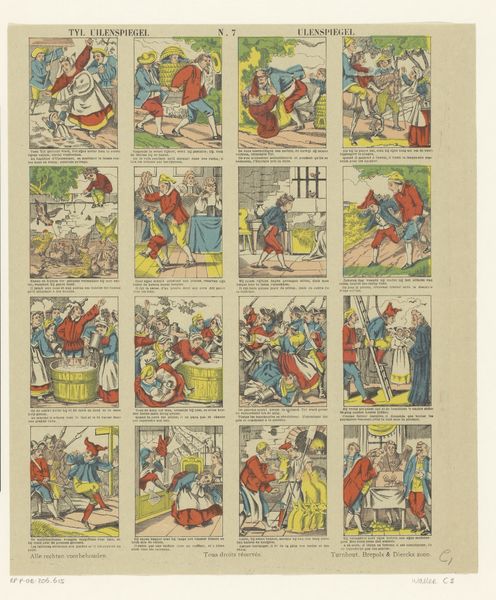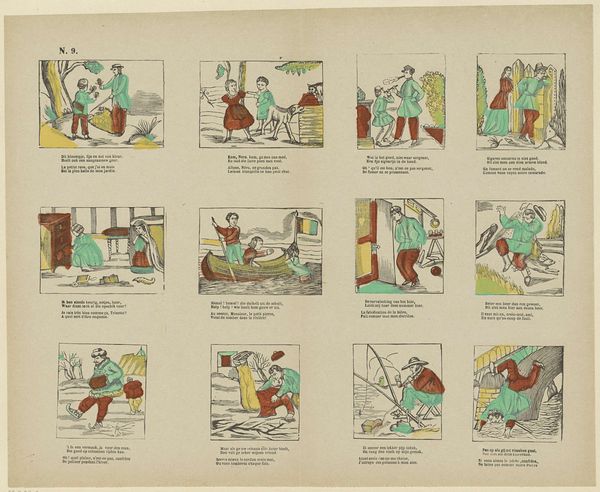
Nero oefent zich in verschillende kunsten / Néron s'exerce dans différents arts 1866 - 1902
0:00
0:00
print, etching
#
narrative-art
#
comic strip
# print
#
etching
#
dog
#
comic
#
genre-painting
Dimensions: height 426 mm, width 346 mm
Copyright: Rijks Museum: Open Domain
Curator: Look at this intriguing print, “Nero oefent zich in verschillende kunsten / Néron s'exerce dans différents arts” by Franciscus Antonius Beersmans, likely created between 1866 and 1902. It presents a series of small scenes, almost like a very early comic strip, rendered as an etching. Editor: My initial impression is one of whimsical chaos! It's a humorous take, perhaps even satirical, given the rather slapdash quality to some of these mini-vignettes. Curator: Exactly. Consider the cultural context. This was an era of increasing literacy and the rise of mass media. Prints like these, employing humor and relatable themes, served as accessible entertainment for a broader audience. The very title suggests an intention to depict a known character, in order to explore wider meanings in this narrative style form of art that was quite common for its time. Editor: I am especially intrigued by the repetition of the dog, who seems to witness and often react to Nero's antics in each panel. I wonder if it is referencing one particular belief and story of the period, or generally stands in for the observer. Its presence feels psychologically charged – almost a canine chorus commenting on the absurdity. Curator: And absurdity seems key here. These little vignettes satirize a perceived 'dilettante' stereotype. Perhaps reflecting a concern among middle class about access to arts as society was rapidly changing. It serves as a moral tale. Editor: Perhaps… the recurring imagery – the dog, Nero's garb, even the slightly clumsy artistic execution – becomes a symbolic shorthand. A code that reinforces and enriches the message. I believe in some cultures, the meaning behind the figure has other origins. Curator: It offers us insight into the social and cultural values of the time. What they were ridiculing, but at the same time providing. A complex exchange that the artwork provides for audiences throughout the history of it. Editor: I think it holds resonance as a visual narrative using animals or persons to suggest morals to guide how audiences should and shouldn’t do in their own behavior. The print creates its power to shape social views. Curator: It definitely allows you to interpret your own take from the period and society we’re both in. Editor: An enduring piece of visual rhetoric then.
Comments
No comments
Be the first to comment and join the conversation on the ultimate creative platform.
